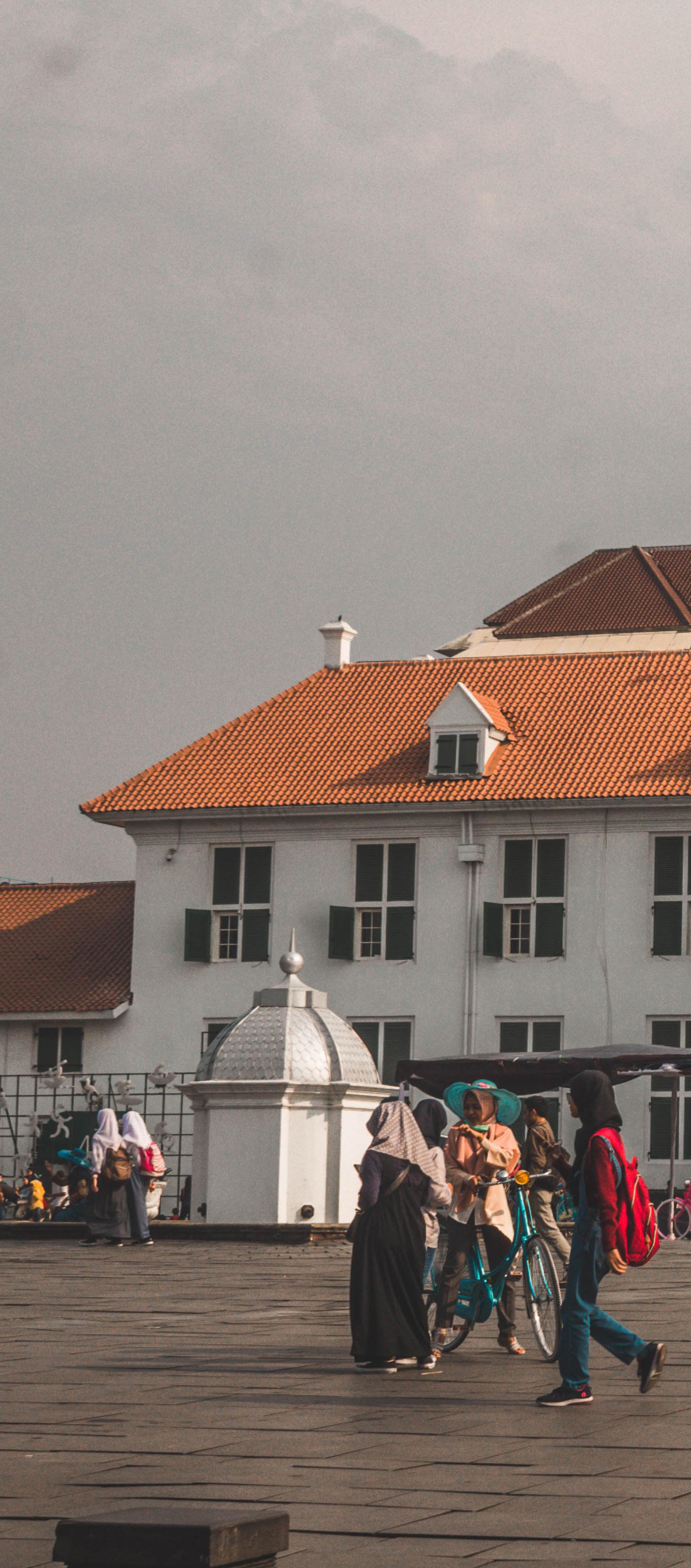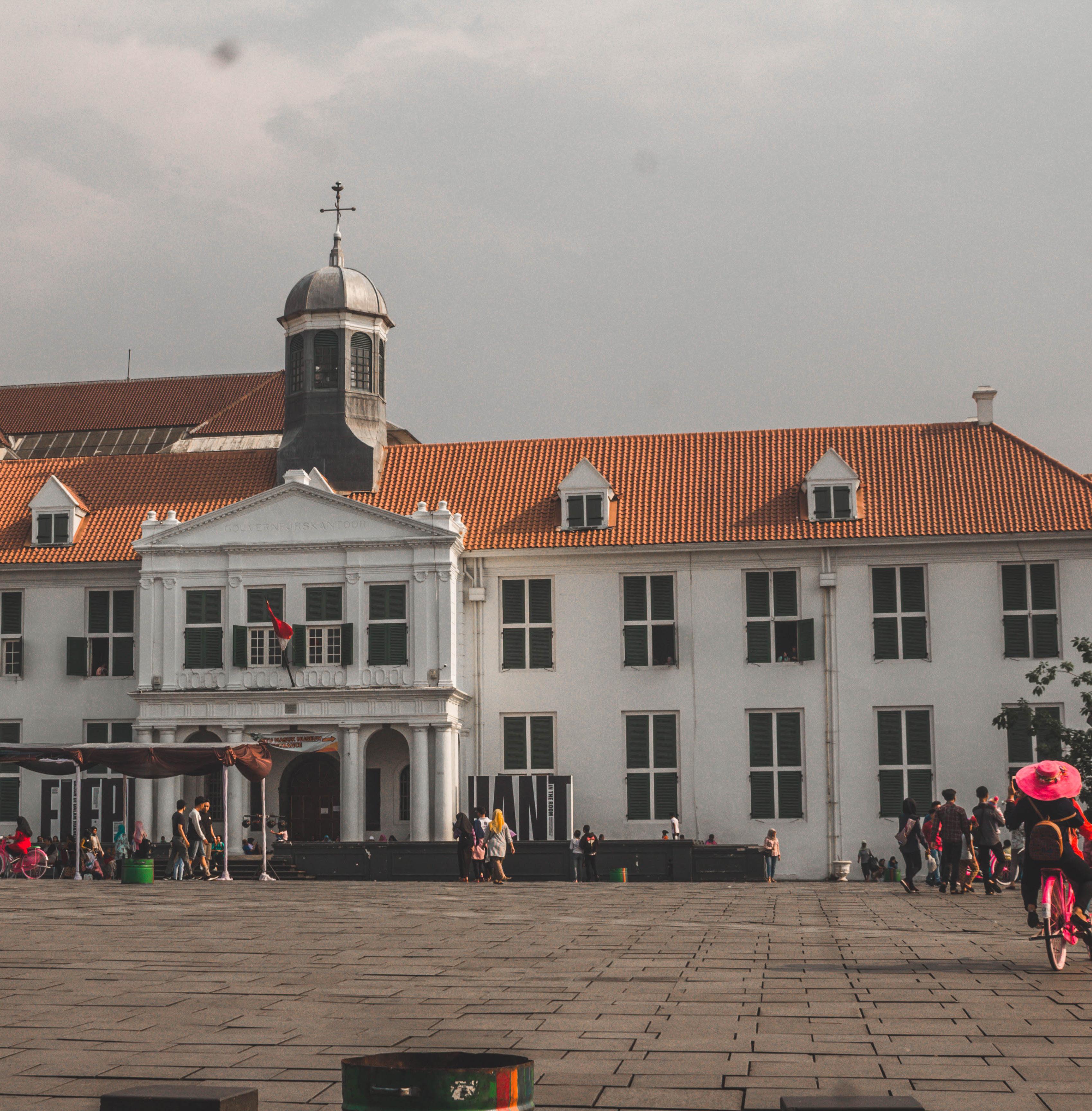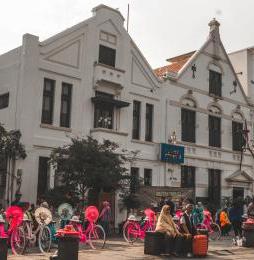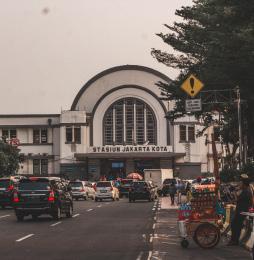
5 minute read
Fatahillah Square , Sights & Flavours of Batavia
“The visitors are enjoying the decorative bicycle rides in the Fatahilah Square”
Taman Fatahillah (Fatahillah Square) takes you back to the colonial times with preserved architectures of European style. The City Hall of the Dutch colonial government was once located here; now it is home to the Jakarta History Museum (slated to reopen in 2014), Museum of Fine Art and Ceramics, and Museum Wayang (shadow puppet). The park is part of Kota Tua, which is known as the Old Town of Jakarta, a gathering place for locals and tourists alike. Street buskers keep everyone entertained as well as trigger-happy. Not to defy military order, we posed with thumbs-up next to the cannon. Unknowingly, the open square where we were standing has a grim past – it was the place for public executions in front of the former City Hall during colonial times. Together with a large crowd, we were captured by the loud whipping sound from the performers at the park. According to our guide, it is a form of ‘whipping art’ from Ponorogo of East Java. The touristy street that leads to Taman Fatahilla is lined with peddlers selling a range of goods from souvenirs, toys, fashion accessories to fruit juices, snacks and desserts. Kerak telor is my newfound favourite in Jakarta! It tastes like the dry version of spicy otak. This classic street eat is made with glutinous rice, shredded coconut, shallots, chilli and egg. The vendor cooks the kerak telor over charcoal fire until it turns golden brown crust. The warm and spicy omelette snack has the right consistency, not too dry, and tasty. Do you believe in tarot reading? The Bornean in traditional costume and feather headdress was reading the tarot cards for the girls. This is the first time I visited a museum that is loaded with currencies. It is none other than Museum Bank Indonesia, a great stop for museum lover in Kota Tua area that is walking distance to Taman Fatahilla (free admission). The museum is well-kept and provides a lot of information explaining the historical background of Bank Indonesia as well as the economic and financial history of the country from the 17th century till today. Interactive exhibits at the museum easily capture the interest of young and old to learn about the finance world. Everyone wishes to have their face on the currency note. Historic building of Bank Indonesia Museum used to be the Office of De Javasche Bank under the former Dutch colonial empire.
Advertisement
“Old buildings around the fatahillah square look very stunning when in the afternoon” On Fatahillah Square in the Old Town (or Kota Tua in Indonesian), you will find the main vestiges of Dutch colonisation. When the city was the colonial capital, then named Batavia, it served as the base of the Dutch East India Company but covered only a small part of the area of the current city of Jakarta. Strolling along this square, you will see the influence of Dutch architecture, evident in the buildings that were the post office and the city hall that housed the seat of the colonial administration for centuries. One such building has since become the National Museum of Indonesia. Indeed, the square has preserved traces of this early Western influence and harks back to the centuries of colonial history. The legendary Batavia Café is another must-see on the square, where the authentic decor immerses you in a mood recalling evenings of the colonial elite. Fatahillah Square streets never seem to empty, the bistros, artists, cartoonists, and street vendors selling local foods animate the neighbourhood day and night. You can also rent bicycles to tour the area before going to the docks of Jakarta.


The Museum Building which was founded at the moment was originally a Town Hall (Stadhuis) which was inaugurated by Governor General Abraham Van Riebeeck in 1710. The construction of the building itself began in the era of Governor General Jan Pieterszoon Coen, in 1620. The unstable Jakarta land condition made the building this had plummeted, so a number of restoration attempts were made to the inauguration. In the future, this building had undergone several functions. This building once served included the Office of the West Java Provincial Government (1925-1942), Dai Nippon logistics office (1942-1945), headquarters of the City Military Command / Kodim 0503 West Jakarta (1952-1968). It was only in 1968 that the building was officially handed over to the Regional Government of DKI Jakarta in 1968 and was inaugurated as the Jakarta History Museum on March 30, 1974 by the Governor of DKI Jakarta, Ali Sadikin. The museum with the popular name ‘Fatahillah Museum’ holds 23,500 collections of historic items, both in the form of original objects and replicas. This collection comes from the Old Jakarta Museum (Oud Batavia Museum) which was previously located at Jalan Pintu Besar Utara No. 27, which is currently occupied by the Puppet Museum. Among the important collections to be known to the public are the Ciaruteun Inscription from Tarumanagara, Si Jagur Cannon, Statue of God Hermes, prisoners from Untung Suropati (1670) and Prince Diponegoro (1830). There were also paintings of the VOC Governor of the
The merchants push their wares in the afternoon and late at night around the Fatahilah location because they are getting crowded Netherlands East Indies from 16021942, prehistoric carpentry tools and weapons collections. In addition, there are antique furniture collections inherited from the 17th century to the 19th century, a number of ceramics, pottery and inscriptions.
Various collections are on display in several rooms, according to their original period. Existing exhibition spaces are, Jakarta Prehistory Room, Tarumanegara Room, Jayakarta Room, Fatahillah Room, Sultan Agung Room and MH Thamrin Room. The division of this room and the arrangement of the existing collections consider the artistic aspects in the hope that they can function optimally as a source of information for the community. The collection exhibited to the public is only around 500 pieces, while the rest is stored in the storage room. Periodically, this collection is rotated so that it can be seen by the public.











